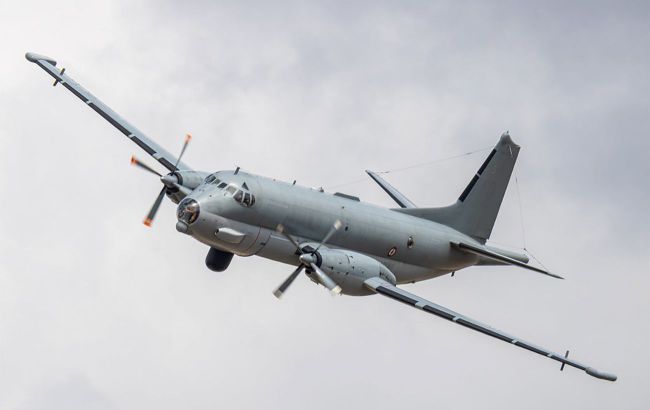Antique but effective: What is known about French ATL2 aircraft set to patrol Black Sea
 Illustrative photo: French ATL2 aircraft (flickr.com)
Illustrative photo: French ATL2 aircraft (flickr.com)
France has deployed ATL2 maritime patrol aircraft to Romania to strengthen surveillance in the Black Sea. Although the equipment is considered antique, it still effectively carries out its missions, Defense Express reports.
The history of the Dassault Atlantic aircraft dates back to the late 1950s, when the Breguet Br.1150 Atlantic was developed to replace the American Lockheed P2V Neptune. It was the first joint NATO aviation project, involving France, the United Kingdom, Germany, the Netherlands, Italy, and Belgium.
At the time, the aircraft was equipped with advanced systems:
-
A radar capable of detecting ships up to 75 km away;
-
Hydroacoustic buoys for submarine detection;
-
Electronic warfare equipment.
Its armament included torpedoes, guided missiles, and depth charges, including potentially nuclear ones. The first operators were France, Germany, the Netherlands, and Italy, and later, a few aircraft were delivered to Pakistan.
In the 1980s, France developed a modernized version, the Atlantic 2 (ATL2), which featured digital communication systems, an upgraded radar, Exocet anti-ship missiles, and an integrated computer that unified all sensors and significantly enhanced operational efficiency.
The ATL2 made its first flight in 1981, and serial production began in 1989. While 42 aircraft were originally planned, France ultimately received only 28, remaining the sole operator.
Today, 18 aircraft remain in service and are undergoing upgrades to the Standard 6 configuration, which includes new radars, electronics, and surveillance systems. In the future, they are expected to be replaced by Airbus A321MPA aircraft.
"As for the missions these historically significant aircraft carry out in the Black Sea, it is clear that they patrol the region and may even serve in an ELINT capacity. Despite their considerable age, they remain a platform fully capable of fulfilling their assigned tasks," analysts emphasize.
Drones over Romania
Earlier, we reported that on September 13, a Russian strike drone entered Romanian airspace. At that time, the country’s air force scrambled F-16 fighters and intercepted the drone.
In August, Russia also attempted another drone attack on Ukraine. During that incident, a drone entered Romanian airspace while being tracked over the Odesa region.
Later, Ukrainian President Volodymyr Zelenskyy confirmed that the Russian drone had violated Romanian airspace and remained there for about 50 minutes.

